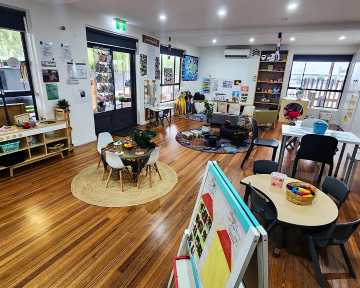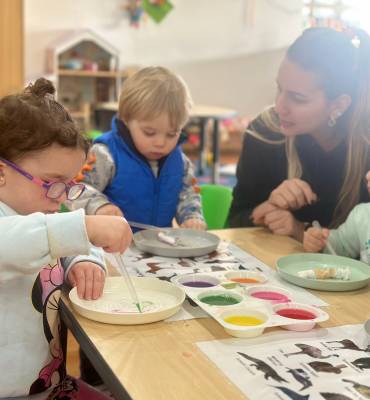Transitions are a natural and important part of every child’s development. They happen whenever a child moves from one place to another, switches between activities, or changes from being with a parent to being with an educator. I’ve seen this firsthand with my own children, and it’s something every family goes through. Whether it’s moving from home to childcare or shifting from playtime to handwashing, transitions take many forms. What I’ve learned, both as a parent and as a Centre Director, is that transitions aren’t just isolated events—they are ongoing processes that help our children learn, grow, and become more independent.
When my own children transitioned from home to childcare, it was a big step—not just for them, but for my husband and me too. I knew it would be an emotional time, but I didn’t expect how much it would affect me personally. Even with my professional experience in early childhood education, I still felt anxious. It was hard for me to let go and trust that they would be okay in a new environment. And it wasn’t just about me—my children had their own challenges. I worried about how they’d adjust to new routines, where things were, and how they’d communicate their needs in a new setting. It took time, but by working closely with their educators, we were able to share our expectations and build a strong partnership. That communication made a huge difference in making the transition smoother for all of us.
How Transitions Can Affect Behaviour
One thing I’ve noticed is how transitions can impact a child’s behaviour. I’ve learned that when transitions are not planned carefully, they can lead to frustration or confusion, and children may act out. Challenging behaviours are more likely to happen when:
- There are too many transitions happening in a short time.
- All the children are expected to transition at the same time (for example, everyone having to eat together).
- Transitions take too long, and children are left with nothing to do (like waiting in a long line to wash their hands).
- Clear instructions aren’t given, either verbally or visually.
- Transitions happen suddenly, without warning.
- The routines at home are very different from those at childcare (for instance, your child may sleep at 1 pm at home, but the schedule at childcare has sleep time at 12 pm).
In my own experience, my children spent more time at childcare than at home, so I knew the rules and routines would be different. That’s why I made it a priority to communicate regularly with their educators about their home routines—things like sleep time, meal times, and even the little things that might help them feel more settled. It made a big difference in how well they adjusted.
Supporting Children with Additional Needs During Transitions
For some children, transitions can be particularly challenging, especially if they have additional needs. For example, children with autism may struggle with changes in their environment and need extra support, like visual cues, to help them understand what’s happening around them. My eldest child, for instance, has always been a bit more introverted. He struggled when we first transitioned him to childcare and later when he transitioned to school. I quickly learned that if we gave him too many instructions at once, or if we only spoke to him without providing visual support, he often felt overwhelmed. And when he didn’t understand, it sometimes led to behaviour that was misinterpreted as defiance.
What I learned through this is that our children might not be “acting out” on purpose—they just need more time, clearer instructions, and perhaps additional support to feel comfortable. By providing extra reassurance and structure, transitions can be a little easier for children who need that extra bit of support.
Things to Think About When Transitioning to Childcare
If you’re preparing your child for childcare, here are a few things I think are important to consider, based on my own experience:
- Opportunities for Visits: Can your child visit their new childcare service and meet the educators beforehand? At Little Stars, we offer two one-hour orientation sessions. This gives both children and parents a chance to meet the team and familiarise themselves with the environment.
- Preparation for the Transition: How is your child prepared for what’s coming? Have they seen pictures of the staff or the space? At Little Stars, we provide a Family Handbook during orientation. It includes photos of all the educators and the rooms they work in, so children have a better idea of what to expect.
- Supporting Your Child: How can you support your child during this time? Communication is key! Regularly check in with your child’s educators to ensure everyone is on the same page. It’s the best way to ensure consistency between home and childcare.
In my experience, when families and educators work together, children have a much smoother and more positive transition. We all want the best for our kids, and by building a strong partnership, we can help them feel safe, supported, and confident as they move through each new stage of their learning journey.











